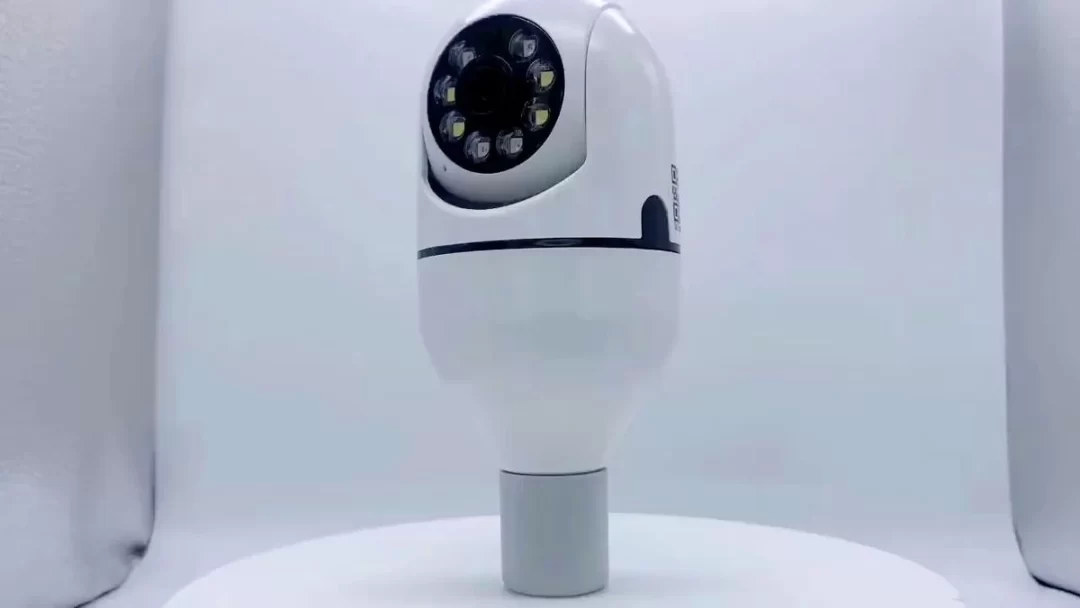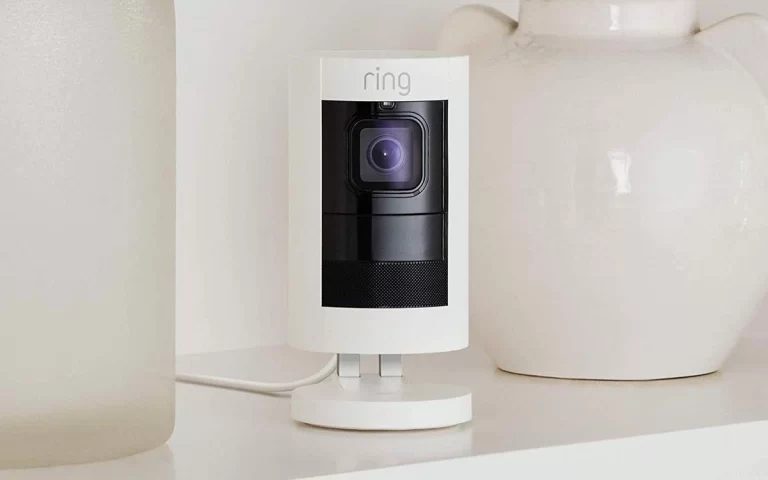Light Bulb Camera With Cloud Storage- Features and Benefits
Light Bulb Camera with Cloud Storage. Light bulb cameras have revolutionized the field of surveillance by seamlessly integrating security cameras into everyday lighting fixtures. With the added advantage of cloud storage, these innovative devices offer a secure and convenient solution for storing and accessing surveillance footage.
In this article, we will explore the concept of light bulb cameras with cloud storage, their benefits, and their applications in various settings.

Key Takeaways
1. Light bulb cameras with cloud storage seamlessly integrate surveillance cameras into lighting fixtures, offering a secure and convenient solution for storing and accessing surveillance footage.
2. Cloud storage provides remote access to camera feeds and recorded videos from anywhere, ensuring users can monitor their properties even when they are away.
3. The advantages of cloud storage include enhanced data security, scalability, data redundancy, and integration with smart home systems.
4. When choosing a cloud storage plan for light bulb cameras, consider factors such as storage capacity, pricing models, and data retention policies.
5. Best practices for cloud storage management involve regularly organizing stored data, monitoring storage capacity, updating the camera firmware, and comparing cloud storage to local storage options.
6. Real-world applications include home security, small business surveillance, and outdoor monitoring of gardens and remote locations.
Exploring Cloud Storage in Light Bulb Cameras
Cloud storage refers to the practice of storing data on remote servers accessible via the Internet. In the context of light bulb cameras, cloud storage provides numerous advantages over traditional local storage solutions.
Firstly, cloud storage enables convenient access to stored footage from anywhere, using any device with an internet connection.
This flexibility allows users to check their camera feeds and review recorded videos even when they are away from home or the premises.
Additionally, cloud storage offers enhanced data security and redundancy. The data is encrypted during transmission and stored in secure data centers, reducing the risk of unauthorized access or data loss.
Cloud storage providers often employ robust security measures, including encryption protocols and multiple data backups, ensuring that valuable footage remains protected.
Moreover, cloud storage provides scalability and flexibility to accommodate growing storage needs. Users can typically choose from different storage plans based on their requirements, allowing them to scale up or down as needed.
This scalability is particularly beneficial for light bulb cameras, as surveillance footage can accumulate quickly over time.
How Cloud Storage Works in Light Bulb Cameras
The process of utilizing cloud storage in light bulb cameras involves capturing data from the camera, transmitting it to the cloud storage provider’s servers, and securely storing it.
When the light bulb camera detects motion or is activated, it records the footage and sends it to the cloud storage using an internet connection.
The data is then encrypted to ensure privacy and securely stored on the provider’s servers.
The storage capacity of cloud storage plans varies depending on the provider and the chosen plan. Some providers offer tiered pricing models, allowing users to select the amount of storage they require.
It is essential to consider the storage limitations and costs when choosing a cloud storage plan for light bulb cameras.
Benefits of Light Bulb Cameras with Cloud Storage

Light bulb cameras with cloud storage offer several advantages for users. Here are the major benefits:
1. Remote Access and Monitoring:
Light bulb cameras with cloud storage allow users to access camera feeds and recorded videos from anywhere using a smartphone, tablet, or computer.
This feature provides peace of mind and enables users to stay connected to their homes or businesses at all times.
2. Data Backup and Protection:
Cloud storage serves as a secure repository for surveillance footage, reducing the risk of data loss due to device malfunction or theft.
In case of physical break-ins or damage to the light bulb camera, the recorded footage remains safely stored in the cloud, preserving crucial evidence.
3. Seamless Integration with Smart Home Systems:
Light bulb cameras with cloud storage can seamlessly integrate with voice assistants or smart home hubs.
This integration enables users to control their cameras, access footage, and receive notifications through a centralized platform.
It enhances the overall home automation experience and simplifies the management of surveillance systems.
Choosing the Right Cloud Storage Plan for Light Bulb Cameras
Selecting the appropriate cloud storage plan for light bulb cameras requires careful consideration of storage capacity, pricing models, and data retention policies.
Different providers offer varying storage plans, allowing users to choose the amount of storage they need based on factors such as the number of cameras and expected data volume.
Pricing models may include monthly or annual subscriptions, with options for additional storage upgrades if required.
Users should evaluate their specific storage needs and budgetary constraints before selecting a plan.
It is also important to consider data retention and archiving options, as some providers may impose limits on the duration for which footage is stored.
Security and Privacy Considerations For Light Bulb Cameras With Cloud Storage
When using cloud storage for light bulb cameras, security and privacy should be paramount. Encryption protocols ensure that data transmitted from the camera to the cloud storage provider remains secure and protected.
It is crucial to choose a provider that implements strong encryption standards and follows industry best practices for data security.
User authentication and access control are also essential for maintaining privacy.
Light bulb cameras with cloud storage should offer robust user authentication mechanisms to prevent unauthorized access to camera feeds and recorded videos.
Additionally, it is advisable to review the privacy policy and terms of service of the cloud storage provider to ensure they align with your expectations and comply with relevant data protection regulations.
Setting Up and Configuring Cloud Storage for Light Bulb Cameras
Now its time to set up your light bulb with cloud storage, here’s the step-by-step process to set it up:
1. Create an Account with a Reputable Provider:
Begin by creating an account with a reliable cloud storage provider that specializes in supporting surveillance data. Many providers offer plans and features specifically designed for this purpose.
2. Connect the Light Bulb Camera to the Cloud Storage Service:
Once the account is set up, proceed to connect the light bulb camera to the chosen cloud storage service.
This typically involves configuring the camera settings and inputting the credentials provided by the storage provider.
3. Customize Settings to Suit Preferences and Requirements:
During the configuration process, users are often given the option to personalize various settings, such as video quality, motion detection sensitivity, and storage preferences.
Carefully review and adjust these settings according to individual preferences and specific requirements.
Best Practices for Cloud Storage Management
Effective management of cloud storage for light bulb cameras involves adopting certain best practices. Regularly reviewing and organizing stored data ensures that it remains easily accessible and organized.
Users should periodically check the available storage capacity and monitor usage to avoid running out of storage space.
If necessary, it may be prudent to optimize storage resources by deleting older footage or implementing data retention policies.
To ensure the continued reliability and performance of light bulb cameras with cloud storage, it is advisable to keep the camera firmware up to date.
Manufacturers often release firmware updates that address security vulnerabilities and introduce new features. Regularly checking for firmware updates and applying them when available helps maintain optimal camera performance.
Comparison of Cloud Storage to Local Storage in Light Bulb Cameras
When considering storage options for light bulb cameras, it is essential to compare cloud storage with local storage solutions.
While local storage may offer certain advantages such as immediate access to footage without relying on an internet connection, it has limitations in terms of data redundancy and accessibility.
Local storage can be susceptible to physical damage, theft, or loss, resulting in permanent data loss.
In contrast, cloud storage provides remote access, robust data backup, and the ability to scale storage capacity as needed.
It eliminates the risk of data loss due to hardware failures or physical damage to the light bulb camera.
However, it is important to consider factors such as internet bandwidth, data privacy concerns, and ongoing subscription costs when deciding between cloud and local storage options.
Real-World Applications and Use Cases
Wondering how light bulb cameras with cloud storage can be useful to you? Here are some use cases you might want to consider:
1. Residential Security
Light bulb cameras with cloud storage serve as effective home security solutions, allowing homeowners to remotely monitor their properties and receive alerts in case of suspicious activities.
This provides peace of mind and enhances the safety of residential premises.
2. Business Surveillance
For small businesses, light bulb cameras with cloud storage offer an affordable and flexible surveillance solution.
They can be easily installed in retail stores, offices, or warehouses, enabling business owners to remotely monitor their premises, ensuring employee safety and protecting assets.
3. Outdoor Security
These cameras are well-suited for outdoor security and monitoring remote locations. With their weatherproof capabilities and cloud storage features, they can monitor gardens, driveways, parking lots, or vacation homes.
Users can access the footage from anywhere, enhancing security and providing peace of mind.
Future Trends in Cloud Storage for Light Bulb Cameras
As technology continues to advance, we can expect further enhancements and trends in cloud storage for light bulb cameras.
Storage technology will likely evolve, offering increased capacity and improved performance to accommodate the growing demand for storing high-resolution video footage.
Artificial intelligence and analytics will play a more prominent role, enabling advanced features such as object recognition, facial detection, and intelligent alert systems.
Moreover, there will be a continued focus on strengthening data privacy and security measures.
Cloud storage providers will invest in robust encryption algorithms, multi-factor authentication, and secure access controls to protect user data from unauthorized access or breaches.
Conclusion
Light bulb cameras with cloud storage provide a comprehensive and convenient solution for integrating surveillance into everyday lighting fixtures.
The combination of advanced camera features, remote access capabilities, and secure cloud storage offers users peace of mind and easy access to their surveillance footage.
Whether used for home security, business monitoring, or outdoor surveillance, these cameras are transforming the way we protect our properties.
As technology advances and privacy concerns are addressed, we can expect cloud storage for light bulb cameras to continue evolving, making our homes and businesses safer and more secure.





This blog post has left us feeling grateful and inspired